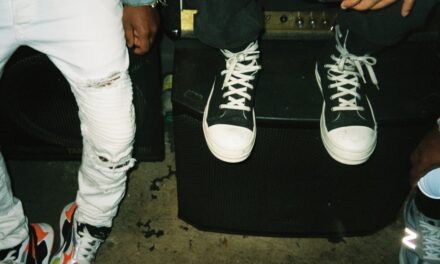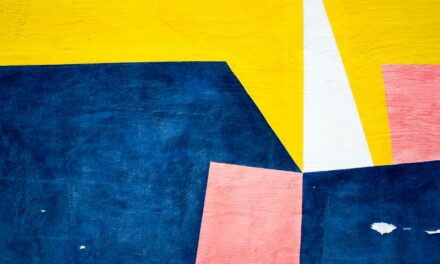Soft pastels and oil pastels are two distinct mediums that offer unique characteristics and possibilities for artists. Soft pastels are composed of pure pigment mixed with a binder, resulting in a chalky texture that allows for vibrant colour application. They are known for their ease of blending and the ability to create soft, delicate transitions between hues.
The high pigment concentration in soft pastels means that they can produce intense colours, making them a favourite among artists who wish to achieve a luminous quality in their work. However, their fragility can be a drawback; soft pastels can easily smudge or break, requiring careful handling and storage. In contrast, oil pastels are made from pigment combined with a non-drying oil and wax binder, giving them a creamy consistency.
This composition allows for a different application technique, as oil pastels can be layered more thickly without the risk of crumbling. The texture of oil pastels is slicker, which can lead to a more painterly effect when applied to the surface. Unlike soft pastels, oil pastels do not blend as seamlessly; instead, they can create bold strokes and defined lines.
This characteristic makes them ideal for artists who prefer a more graphic style or wish to incorporate sharp contrasts in their work. Understanding these fundamental differences is crucial for artists looking to experiment with layering techniques between the two mediums.
Summary
- Soft pastels are powdery and easy to blend, while oil pastels are more waxy and can be layered for a textured effect.
- Layering soft pastels on top of oil pastels can create vibrant and rich colours, as the soft pastels adhere well to the oil pastel surface.
- Layering oil pastels on top of soft pastels can create a resist effect, as the oil pastels repel the soft pastels and create interesting textures.
- Blending soft and oil pastels together can create smooth transitions and gradients, as the two mediums can be mixed and smudged together.
- Creating texture with layered soft and oil pastels can be achieved by using different techniques such as stippling, scumbling, and sgraffito to build up layers and add depth to the artwork.
Layering Soft Pastels on Top of Oil Pastels
Considering the Underlying Layer
When applying soft pastels on top of oil pastels, it is essential to consider the drying time and texture of the underlying layer. Oil pastels remain somewhat tacky even after application, which can create an interesting interaction with the softer texture of the pastels above.
Applying Soft Pastels with a Light Touch
The key is to apply the soft pastels gently, using a light touch to avoid disturbing the oil pastel layer beneath. This technique can enhance the vibrancy of the colours, as the soft pastels can adhere to the oily surface while still allowing for smooth blending. One effective approach is to start with a base layer of oil pastels, creating a foundation of colour and texture.
Adding Depth and Dimension
Once this layer is established, artists can introduce soft pastels to add depth and dimension. The soft pastels can be used to create highlights or subtle transitions, enhancing the overall composition. This method not only enriches the colour palette but also adds a tactile quality to the artwork. The interplay between the two mediums can result in a dynamic visual experience, where the softness of the pastels contrasts beautifully with the boldness of the oil pastels.
Layering Oil Pastels on Top of Soft Pastels
Conversely, layering oil pastels over soft pastels presents its own set of challenges and opportunities. When applying oil pastels on top of soft pastels, artists must be mindful of the underlying texture created by the softer medium. The initial layer of soft pastels can create a somewhat uneven surface due to their chalky nature, which may affect how smoothly the oil pastels glide over it.
However, this can also be advantageous; the rough texture can provide a gripping surface for the oil pastels, allowing for more pronounced strokes and defined lines. To achieve successful layering in this manner, it is advisable to allow the soft pastel layer to set before applying oil pastels. This waiting period ensures that any excess dust from the soft pastels has settled, reducing the risk of smudging or unwanted blending.
Once ready, artists can use oil pastels to add bold accents or intricate details on top of the softer hues. The contrast between the creamy oil pastel and the matte finish of soft pastels can create striking visual effects, enhancing both depth and interest in the artwork. This technique is particularly effective for creating highlights or focal points within a composition.
Blending Soft and Oil Pastels Together
Blending soft and oil pastels together opens up a world of creative possibilities for artists seeking to explore new textures and colour interactions. While each medium has its own blending techniques, combining them requires a thoughtful approach to achieve harmonious results. One effective method is to use a blending tool or your fingers to gently merge the two mediums on the surface.
The creamy consistency of oil pastels allows them to mix well with the softer texture of pastels, creating smooth transitions between colours. When blending, it is essential to consider the order in which you apply each medium. Starting with soft pastels can provide a vibrant base layer that sets the stage for oil pastels to enhance and define specific areas.
Conversely, beginning with oil pastels allows for bold strokes that can then be softened with soft pastels for a more nuanced effect. Experimentation is key; artists may find that certain combinations yield unexpected results that elevate their work beyond traditional boundaries.
Creating Texture with Layered Soft and Oil Pastels
Texture plays a vital role in visual art, adding depth and interest to a piece.
By manipulating both mediums, artists can achieve everything from smooth gradients to rough, tactile surfaces.
For instance, applying soft pastels in a stippling technique can create a textured background that contrasts beautifully with bold strokes of oil pastel layered on top. Another effective way to create texture is through the use of tools such as palette knives or brushes. These tools can be employed to scrape or spread oil pastels over soft pastel layers, resulting in unique patterns and textures that are difficult to achieve with traditional application methods alone.
The interplay between the two mediums allows for endless experimentation, encouraging artists to push their creative boundaries.
Using Different Surfaces for Layering Soft and Oil Pastels
The choice of surface significantly impacts how soft and oil pastels interact during layering processes. Various surfaces offer different textures and absorbency levels that can influence the final outcome of an artwork. For instance, textured paper provides more grip for both mediums, allowing for richer layering effects and enhanced colour saturation.
Conversely, smoother surfaces may allow for more fluid application but could limit blending capabilities. Artists may also experiment with unconventional surfaces such as canvas or wood panels when working with these mediums. Canvas offers a unique texture that can enhance the vibrancy of both soft and oil pastels while providing durability for layered works.
Wood panels can absorb some of the oils from oil pastels while allowing for interesting textural contrasts when combined with soft pastels. Ultimately, selecting the right surface is crucial for achieving desired effects and ensuring that both mediums work harmoniously together.
Tips and Techniques for Layering Soft and Oil Pastels
When layering soft and oil pastels, several tips and techniques can help artists maximise their creative potential. First and foremost, it is essential to work in thin layers rather than applying thick applications all at once. This approach allows for better control over blending and layering while reducing the risk of overwhelming one medium with another.
Additionally, using fixatives sparingly between layers can help preserve the integrity of each medium without compromising their unique qualities. Another valuable technique involves experimenting with different application tools beyond just fingers or traditional pastel sticks. Brushes, palette knives, or even cotton swabs can create varied effects when applying either medium.
For instance, using a brush with oil pastels can produce softer edges and smoother transitions than applying directly from the stick. Furthermore, artists should not hesitate to embrace imperfections; sometimes unexpected marks or smudges can lead to exciting new directions in their work.
Examples of Unique Effects Achievable with Layered Soft and Oil Pastels
The combination of soft and oil pastels opens up an array of unique effects that can elevate an artist’s work beyond conventional boundaries. One striking example is creating atmospheric landscapes where soft pastels serve as a base for vibrant skies or distant mountains while oil pastels add depth through foreground elements like trees or rocks. The contrast between the ethereal quality of soft pastels and the boldness of oil pastels creates a dynamic visual experience that draws viewers into the scene.
Another fascinating effect is achieved through layering techniques that mimic traditional painting styles such as impasto or glazing. By applying thick layers of oil pastel over softer backgrounds, artists can create three-dimensional textures reminiscent of thick paint applications found in oil painting. This technique not only adds depth but also invites viewers to engage with the artwork on a tactile level.
Ultimately, exploring these unique effects through layering soft and oil pastels encourages artists to push their creative boundaries while discovering new dimensions within their artistic practice.
If you are interested in exploring unique effects in art, you may also enjoy reading about Francisco de Zurbarán’s painting “Still Life with Lemons, Oranges and a Rose” from 1633. This article on Think of Art delves into the intricate details of this masterpiece and how Zurbarán achieved such a stunning composition. It’s fascinating to see how different artists use various techniques to create captivating works of art.


